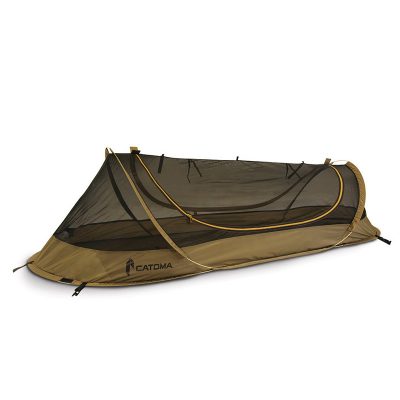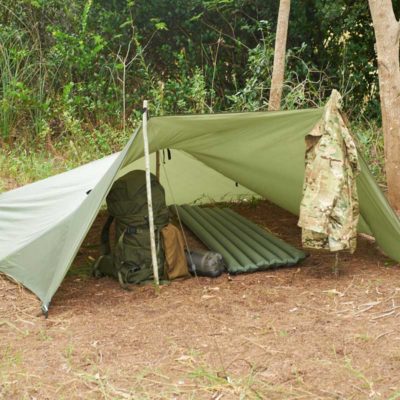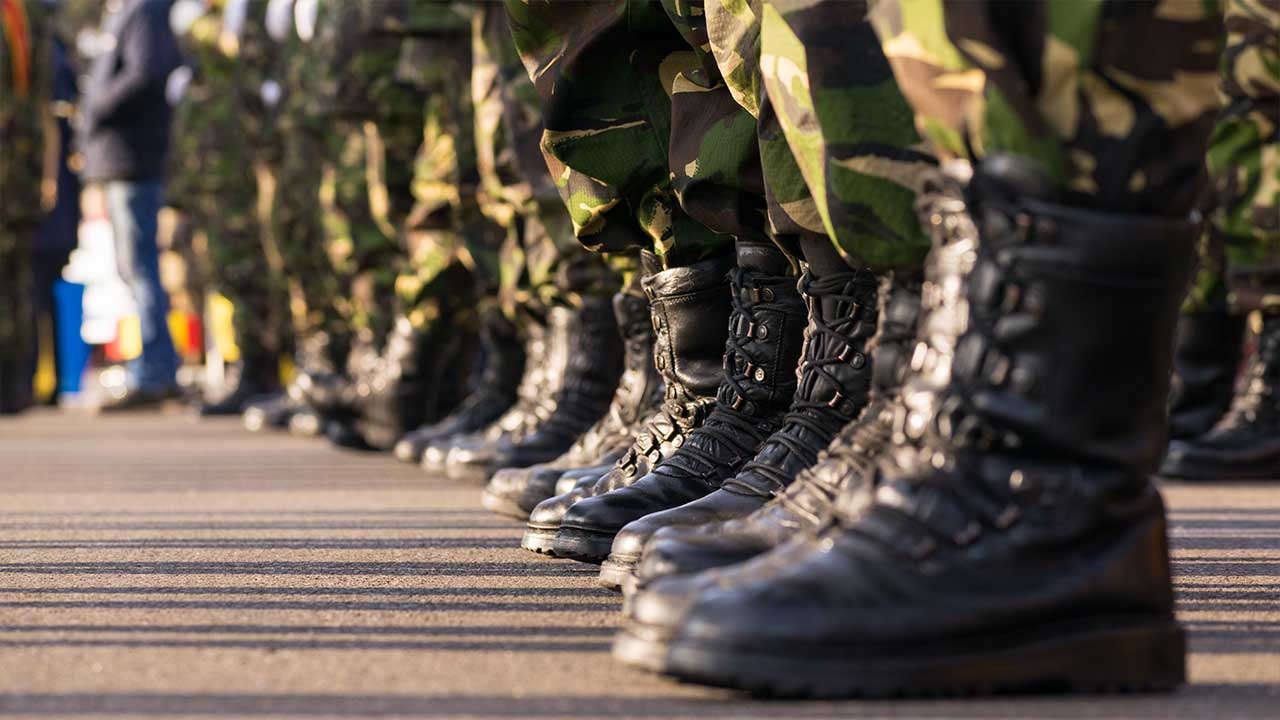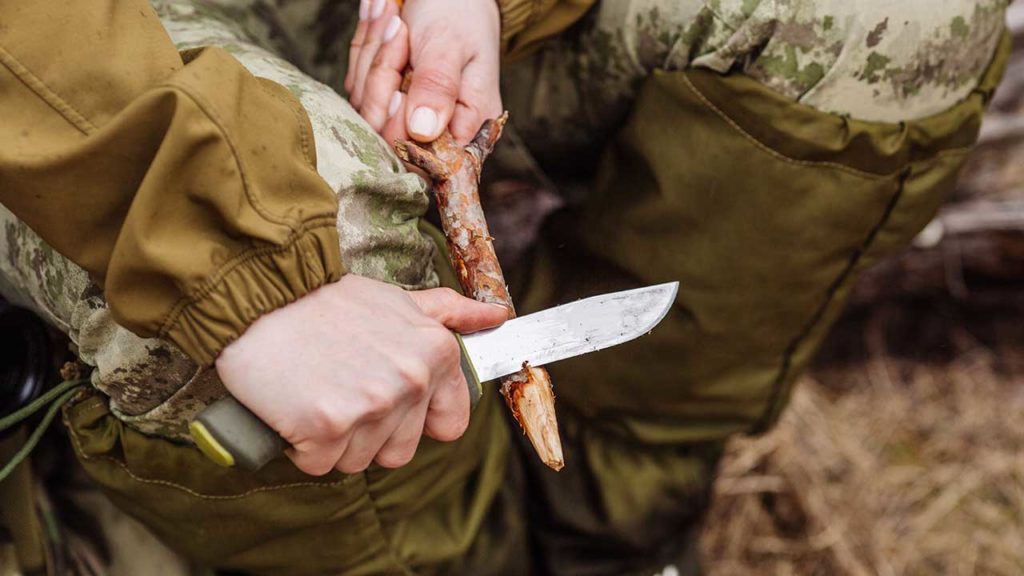Combat Boots back then and now.
Early Roman legionnaires wore hobnail boots known as caligae. By the first century CE, the calceus, which was an enclosed boot with more warmth and protection, became popular for both soldiers and civilians. Fast-forwarding a millennium and a half brings us to the English Civil War, where each soldier was officially issued three ankle-high combat boots. Soldiers typically rotated their boots so that all saw equal wear. These boots were made with cutouts on the side to accommodate feet of different width and they did not differentiate between the right and left foot. Buckles and heels were introduced sometime in the late 17th century.
Toward the end of the 19th century, the British armies moved to what were known as “ammunition boots.” They earned this name because they were procured by the Master Gunner and the Munitions Board. These combat boots were unlined and ankle high with leather laces, iron heel and toe plates, and an iron-studded sole. Starting in the early 19th century, American soldiers wore similar ankle-high boots made on straight lasts. There was a brief flirtation with calf-length boots during the War of 1812, but soldiers found that they were neither convenient nor comfortable and ankle boots came back.
The first boot developed exclusively for military service was the Jefferson Boot, in 1816. As with most shoes and boots of the time, there was no differentiation between boots for the left and right feet. Combat boots have been upgraded and improved over the past two centuries – and they certainly fit better now – but the basic look and purpose remain the same.
The Twentieth Century and Beyond
Edward Luman Munson, a doctor in the U.S. Army Medical Corps, developed the Munson Last after X-raying and studying the feet of over 4000 soldiers. Brogans created around the Munson Last followed the contours of the foot and provided superior support when laced properly. In 1912, the U.S. armed forces adopted the Munson Last for all service boots and shoes. Existing footwear was relegated to prison use.
The trench boot was introduced during World War I. French, Belgian, and American soldiers, as well as some others, wore this style of combat boot. The trench boot featured a leather sole with an iron plate in the heel. Unfortunately, it was not waterproof and this was a major downside. By 1918, the combat boots were modified to be waterproof, but this also made them much heavier and much less comfortable.
Jungle boots were developed in Panama in the 1940s for use in that type of environment. These boots were lightweight with a rubber sole and ventilated mesh that allowed moisture to escape or evaporate. Jungle boots were also worn during the Vietnam War.
U.S. paratroopers wore “jump boots,” which were all leather. This style was also worn by Korean War soldiers for warmth and protection in North Korea’s mountains.
By the 1980s, most countries, including the United States, were issuing soldiers combat boots that were practical and comfortable. An example of this is the Belleville 500 Waterproof USMC boot (which is worn by most branches of the U.S. armed forces, not just the Marines). The Belleville 500 is a lace-up boot in rough tan leather that is flexible for walking and running, but still provides adequate ankle support. Current manufacturers of service combat boots include Altama, Bates, Belleville, Converse/Warson Brands, McRae, Rocky, and Wellco.
In the punk scene of the 1970s, combat boots made their way into the civilian world. Once the purview soldiers and the punk, grunge, heavy metal, industrial, skinhead, and BDSM subcultures, they slowly became more mainstream. As with many niche products, once this happened, they lost what made them special in the first place. Sturdy, authentic combat boots were replaced by inexpensive, big-box knockoffs and High Street fashion stores.
Around the World
No matter what country, soldiers need boots that are not only sturdy but are suited to their needs. This can mean different things for different armies, and combat boots around the world are made with functional features such as tread/grip, stability and support, foot and ankle protection, ventilation, insulation, and environmental suitability. Materials such as stiffened and waterproofed leather, durable treaded rubber, and Gore-Tex side panels are used to achieve this. Boots for special forces such as paratroopers are also needed. Most soldiers have both combat boots and dress shoes/boots for parade and other ceremonial duties.
- Argentinian combat boots date back to the Falklands War and feature durable stitched rubber soles.
- The Australian Defense Force is primarily outfitted with the Redback Terra Combat Boot, which is a replacement for Vietnam-era general purpose boots. Soldiers are not pleased with the limited sizes available. General purpose, jungle-style, and flame-resistant boots are provided.
- Belgian soldiers’ combat boots are produced by Rubex, Rugak, and Solidor. They are made with leather uppers and tire-tread rubber soles.
- The French army’s combat boots are nicknamed “rangers” and are made by Meindl. They are made with Gore-Tex for waterproofing.
- Boots worn by the Indian army have been essentially unchanged for 130-plus years except for the addition of a molded sole. They were produced exclusively by the Ordnance Factories Board until 2017, when contracts were issued to private companies.
- The Norwegian armed forces wear the M77 combat boot manufactured by Alfa Skofabrikk AS. It was 10 years in development; considerations were weight, durability, water resistance, comfort, and ease of maintenance.
- Singapore service members wear Frontier black combat boots. These boots have a water outlet to let moisture leak out. Some service members find that the boots do not wear very well.
- Spain provides three different models of combat boots: regular, walking, and paratrooper. Boots were originally produced by Segarra and are now made by Imipiel.
- Swedish soldiers are issued both winter and summer boots based on boot model 90. The winter-model boots are designed to be used with standard Swedish army wooden skis.
- The United Kingdom issues five different types of brown combat boots to armed services personnel. These include desert combat, desert patrol, temperate combat, patrol, and cold wet weather.








![[Practical Guide] Hunting Etiquette on capturing your game [Practical Guide] Hunting Etiquette on capturing your game](https://extremeoutfitters.com/wp-content/uploads/2022/06/Feature-IMG-1280x720-etiquettev2-1024x576.png)

Well detailed history of combat-boots. Using this information for a paper for school. Whilst I do not expect the author to have all the details, such as amount used/ sold and details on the more modernized boots and when they were introduced. This information was still quite solid and helpful. Thank you!